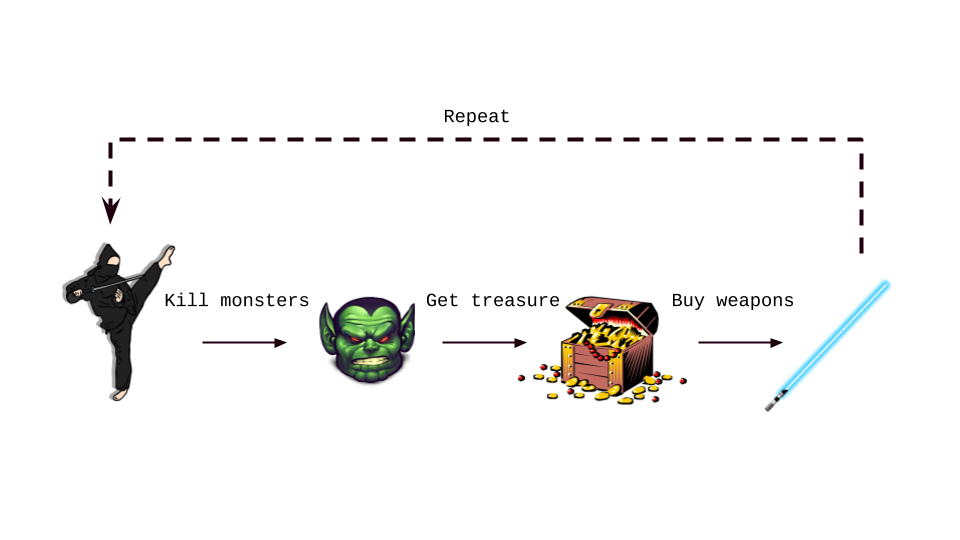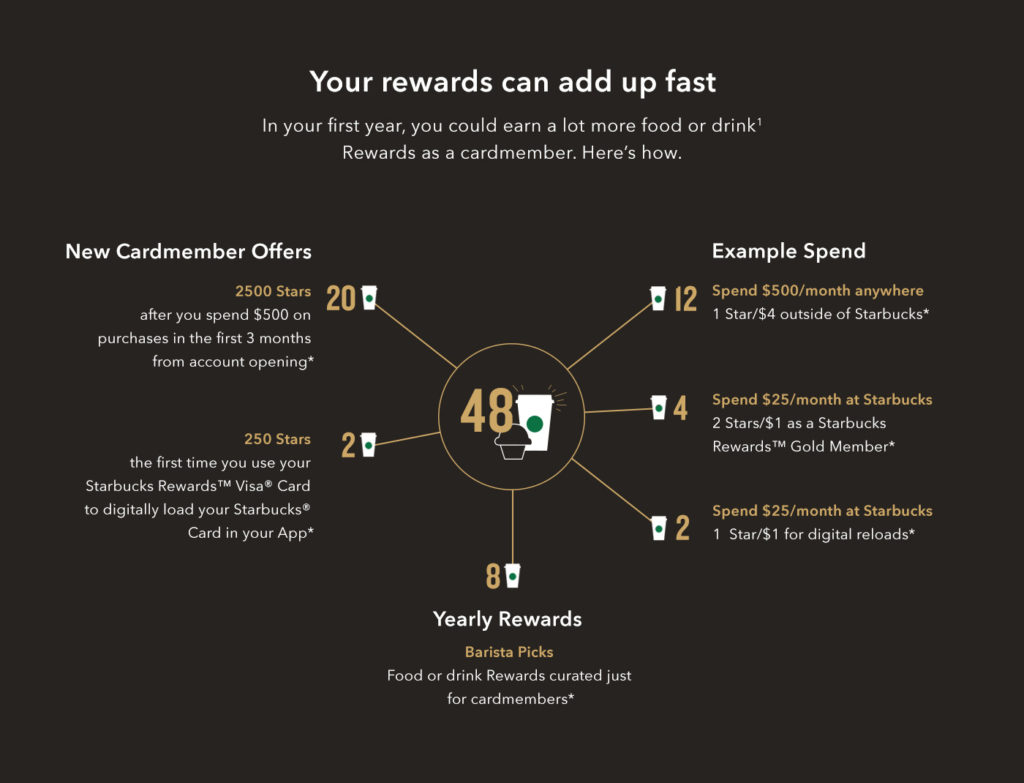With user acquisition costs constantly rising, it’s more important than ever to retain the users you’ve already acquired.
In this short article, I’ll share what I’ve learned crafting loyalty systems for brands,and what can we learn from games about user loyalty.
Learning loyalty from the masters
In digital games, especially in the mobile free-to-play era, retention is the key to success, second only to monetization. Understanding how games retain users may help us design loyalty systems for every business. I would like to focus on an important gaming principle called feedback loop.

In this made-up game, our hero is out to slash monsters, using only his bare hands. (Can monsters be slashed with bare hands? Dunno. Never mind, let’s continue). Slashed monsters leave loot behind them. With the loot, the player buys better weapons that help him fight bigger monsters, that will leave behind bigger loot, that will be invested in even deadlier weapons, which are very much needed at that point because the monsters are now awfully strong, but, oh, the loot that they leave behind! Well… you get the idea.
We can learn three key points from the feedback loop:
- The use of internal rewards
- Choice
- Growth over time
Let’s dive into each point and see how we can use it in our loyalty design.
Point #1: Use internal rewards
In the feedback loop I’ve just described, the upgraded weapons are the ultimate reward that the player is after. They track back to his original intent of slaying monsters.
I consider this an internal reward, as it stays within the game’s system and banks on the player’s desire to slay monsters to begin with.
Now imagine that, instead of getting weapons, players would get external rewards such as coupons for cinema.
How would the act of slaying a monster be perceived in such a design? Probably just as a means to get the prize. And what happens if the prize is cancelled after a while, or changes to something that the user has no desire in getting?
The activity, monster slaying, would likely stop.
The use of external rewards is a quick fix. If we are looking for loyalty over time, we would prefer to incentivise users rewarding them within the frame of our actual product, rather than outside of it.
Key takeaway
Use external rewards as a last resort. Try to close a feedback loop by tracking rewards back to your user’s original intent, and allow them to do more actions in your own product as a reward.
Point #2: Choice

The power of games lies in choice. Players have the agency to do things their own way. THEY get to choose how to act, what to say, which strategy to pick.
Alas, businesses leave choice out of their loyalty plans. Washed your car 9 times? Tenth is on us.
But how about allowing users some choice?
Keeping with the carwash example, let’s say that customers who use the service get credits they can spend in various ways. 1,000 credits are worth a free wash, 2,000 are worth interior cleaning and 3,000 are worth a complete car wax. Customers are free to accumulate credits and use them as they see fit.
This gives a sense of agency to the customers and they can be strategic in how they spend them.
Businesses can also use credits to strengthen other desired actions to be made by their customers. For example, sharing a photo of the clean car with a tag of the place may be worth 200 credits, inviting a friend can be worth 1,000 credits, and so on.
A fine example of this method is the Starbucks reward system. Probably one of the best retail loyalty schemes around, Starbucks offers choice to their customers in how they want to spend their stars. They can choose to spend 25 stars to customize their drink, or save them to spend on a bigger prize like a lunch sandwich or even a bag of coffee.
Starbucks allows not only choice, but another important aspect that is mostly looked upon in loyalty systems: growth.
Point #3: Growth
Another key concept in games is growth. Usually, over the course of a game, players become bigger and stronger. Never stagnant.
Many programs simply do not utilize growth, thus not allowing their players this feeling of empowerment. You know, the same ole’ get the tenth for free scheme.
To empower users, the loyalty system should be able to bestow rewards on them at increasing rates. Let’s look at Starbucks loyalty system again and how they use growth in their design.
In Starbucks Rewards, a star equals $2. However, inside the app, there are various ways to win a lot more of these stars. Starbucks would have customers do “quests,” like walking in a Starbucks joint during slow hours, and provide them with a pack of stars for doing so.
Last month they launched an AR game called Starland, which gives out stars just for playing it, plus the chance to win up to 15,000 stars, or a star multiplier for a year (6 stars per $1 spend).
These are a lot of stars to spend.

From the customer’s point of view, it feels like hacking the system. They get free money just for walking into the cafe or playing a game on the app.
To bake growth into your loyalty program, write a list of all the desired actions you want your users to take and price it according to what it is worth for you.
For example:
- Wash the car – 100 credits
- Upload a photo of the cleaned car – 50 credits
- Invite a friend – 2,000 credits
- Purchase complementary goods – 500 credits
And so on.
This way, your customers will have choice, and experience growth, and that feeling of “hacking the system” while getting free money.
Summary
When designing a loyalty system for whatever business, product, or service, remember to use these 3 key points.
- Close a feedback loop with internal rewards that track back to the original customer intent
- Allow customers to choose their way of spending in the system
- Use growth – alternate ways to earn credits. Let your customers feel they have “hacked the system” for being loyal to your brand
Found this article helpful? Let me know in the comments.
